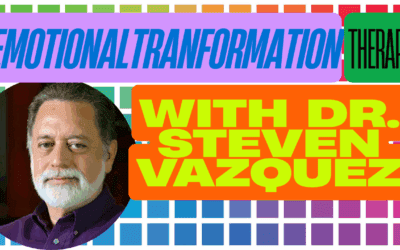What is Intensive Short-Term Dynamic Psychotherapy (ISTDP)?

Intensive Short-Term Dynamic Psychotherapy (ISTDP) is a form of brief psychotherapy developed by Dr. Habib Davanloo in the 1960s. It is characterized by its focus on rapidly accessing and resolving unconscious conflicts that underlie emotional and psychological distress. ISTDP aims to achieve significant therapeutic change within a relatively short time frame, typically ranging from 10 to 40 sessions, depending on the patient’s needs and the complexity of their issues.
The core premise of ISTDP is that many psychological problems stem from unresolved emotional conflicts that have been repressed or pushed out of conscious awareness. These conflicts often originate in early life experiences and continue to influence a person’s thoughts, feelings, and behaviors in adulthood. ISTDP employs specific techniques to break through psychological defenses and bring these unconscious conflicts to the surface, where they can be processed and resolved.
Who Created ISTDP and What Led to Its Development?
Dr. Habib Davanloo, a Canadian psychiatrist of Iranian origin, is the founder of ISTDP. Born in 1927 in Iran, Davanloo studied medicine at the University of Tehran before moving to the United States for his psychiatric training. He completed his residency at Harvard University and later moved to Canada, where he became a professor of psychiatry at McGill University.
Davanloo’s journey towards developing ISTDP began in the 1960s when he became frustrated with the limitations of traditional psychoanalytic approaches. He observed that many patients made little progress despite years of therapy, and he was determined to find a more efficient and effective method of treatment.
Influenced by the work of psychoanalysts like Sigmund Freud, Sandor Ferenczi, and Wilhelm Reich, Davanloo began experimenting with more active and confrontational techniques in therapy. He videotaped his sessions and meticulously studied the interactions between therapist and patient, looking for patterns and interventions that led to breakthroughs.
Over time, Davanloo refined his approach, developing a set of techniques that he found consistently effective in breaking through patients’ defenses and accessing their underlying emotional conflicts. He presented his findings at conferences and in publications, gradually gaining recognition for his innovative method.
What Were the Influencers and Collaborators in the Development of ISTDP?
While Davanloo was the primary architect of ISTDP, his work was influenced by and built upon the contributions of several key figures in psychotherapy:
- Sigmund Freud: Davanloo’s approach is rooted in psychoanalytic theory, particularly Freud’s concepts of the unconscious and psychological defense mechanisms.
- Sandor Ferenczi: Ferenczi’s emphasis on the importance of emotional experience in therapy and his experiments with more active techniques influenced Davanloo’s approach.
- Wilhelm Reich: Reich’s focus on character armor and bodily manifestations of psychological defenses informed Davanloo’s attention to non-verbal cues and physical signs of anxiety.
- David Malan: A British psychoanalyst who developed the “triangle of conflict” and “triangle of person” concepts, which Davanloo incorporated into ISTDP.
- Peter Sifneos: Another pioneer in short-term dynamic therapy, whose work on anxiety-provoking therapy paralleled some of Davanloo’s ideas.
Davanloo’s work also coincided with a broader trend in psychotherapy towards developing more time-limited and focused interventions. This trend was partly driven by economic factors, such as the need for more cost-effective treatments, and by a growing emphasis on evidence-based practice in mental health care.
What Cultural and Economic Forces Influenced the Development of ISTDP?
Several cultural and economic factors contributed to the development and growth of ISTDP:
- Shift towards brief therapies: In the 1960s and 1970s, there was a growing demand for more time-efficient therapies due to economic pressures and changes in healthcare systems.
- Emphasis on empirical evidence: The rise of evidence-based medicine created a need for therapies that could demonstrate measurable outcomes within defined time frames.
- Cultural shift towards immediacy: The fast-paced nature of modern society led to a desire for quicker results in various aspects of life, including mental health treatment.
- Critiques of traditional psychoanalysis: There was increasing skepticism about the effectiveness and length of traditional psychoanalytic treatments, creating an opening for new approaches.
- Technological advancements: The availability of video recording equipment allowed Davanloo to study therapy sessions in detail, contributing to the development and refinement of ISTDP techniques.
- Globalization of mental health practices: The increasing exchange of ideas across borders facilitated the spread of new therapeutic approaches like ISTDP.
These factors created a fertile ground for the development and dissemination of ISTDP as a novel and potentially more efficient form of psychotherapy.
What Clinical Practice Issues Did ISTDP Address?
ISTDP emerged as a response to several limitations and challenges in existing psychotherapeutic practices:
- Length of treatment: Traditional psychoanalysis often required years of therapy, which was not feasible or desirable for many patients.
- Passive therapist stance: Davanloo believed that the traditionally neutral and passive stance of psychoanalysts could reinforce patients’ defenses rather than helping to overcome them.
- Lack of focus: Many existing therapies lacked a clear focus or structure, leading to prolonged treatments without clear goals or endpoints.
- Resistance and defenses: Traditional approaches often struggled to effectively address and overcome patient resistance and psychological defenses.
- Limited emotional engagement: Davanloo observed that many therapies failed to adequately engage patients’ emotions, which he saw as crucial for therapeutic change.
- Symptom focus vs. underlying causes: Many therapies focused primarily on symptom reduction rather than addressing the underlying emotional conflicts that Davanloo believed were at the root of psychological problems.
- Lack of observable process: The private nature of most therapy sessions made it difficult to study and improve therapeutic techniques systematically.
ISTDP aimed to address these issues by providing a structured, time-limited approach that actively challenged patients’ defenses, focused on emotional experience, and targeted underlying conflicts rather than just surface symptoms.
How Has ISTDP Been Integrated into Other Models or Influenced the Field of Psychotherapy?
ISTDP has had a significant impact on the field of psychotherapy, both directly and through its influence on other therapeutic approaches:
- Integration with Cognitive-Behavioral Therapy (CBT): Some therapists have combined elements of ISTDP with CBT techniques, creating integrative approaches that address both unconscious conflicts and cognitive patterns.
- Influence on Emotionally Focused Therapy (EFT): While developed independently, EFT shares some similarities with ISTDP in its focus on accessing and processing core emotions.
- Contribution to Accelerated Experiential Dynamic Psychotherapy (AEDP): AEDP, developed by Diana Fosha, incorporates elements of ISTDP along with attachment theory and affective neuroscience.
- Impact on Short-Term Dynamic Psychotherapy (STDP): ISTDP has influenced the broader field of short-term dynamic therapies, contributing to the development of various brief psychodynamic approaches.
- Training and supervision methods: Davanloo’s use of video recording in training and supervision has influenced how many therapists learn and refine their skills across various therapeutic modalities.
- Emphasis on the therapeutic alliance: ISTDP’s focus on the relationship between therapist and patient has reinforced the importance of the therapeutic alliance in psychotherapy research and practice.
- Contribution to psychotherapy research: The structured nature of ISTDP and its emphasis on observable change have facilitated research into the process and outcomes of psychodynamic therapy.
- Influence on trauma-focused therapies: ISTDP’s techniques for accessing and processing difficult emotions have influenced some approaches to treating trauma and PTSD.
What is the Timeline of ISTDP’s Creation, Dissemination, and Development?
Here’s a timeline of key events in the development and spread of ISTDP:
1960s: Dr. Habib Davanloo begins developing the techniques that would become ISTDP at McGill University in Montreal, Canada.
1975: Davanloo presents his first major paper on ISTDP at the 5th International Congress of the International College of Psychosomatic Medicine in London.
1978: Davanloo publishes “Basic Principles and Techniques in Short-Term Dynamic Psychotherapy,” one of the first comprehensive descriptions of his approach.
1980: The first ISTDP training program is established at McGill University.
1986: Davanloo’s seminal book, “Short-Term Dynamic Psychotherapy,” is published, providing a detailed account of ISTDP theory and technique.
1990s: ISTDP begins to spread more widely, with training programs established in various countries, including the United States, United Kingdom, and several European nations.
2000: The International Experiential Dynamic Therapy Association (IEDTA) is founded, providing a professional organization for ISTDP and related approaches.
2005: Publication of “Intensive Short-Term Dynamic Psychotherapy: Theory and Technique” by Patricia Coughlin Della Selva, further codifying and disseminating ISTDP principles.
2010s: Increased research on ISTDP, including randomized controlled trials, contributes to its evidence base.
2020 onwards: Growing integration of ISTDP principles with other therapeutic approaches and continued refinement of techniques based on ongoing research and clinical experience.
How Does ISTDP Conceptualize Trauma, the Unconscious, and Identity?
ISTDP has a unique perspective on trauma, the unconscious, and identity:
Trauma:
In ISTDP, trauma is seen as a significant source of unconscious conflict. Traumatic experiences, especially those occurring in childhood, are believed to create intense emotions that the individual was unable to process or express at the time. These unprocessed emotions become locked in the unconscious, leading to psychological defenses that can manifest as symptoms or maladaptive behaviors in adulthood.
ISTDP views the resolution of trauma as involving the reactivation and full experiencing of these buried emotions in the safety of the therapeutic relationship. By facing and processing these emotions, patients can release the energy bound up in traumatic experiences and achieve psychological healing.
The Unconscious:
The concept of the unconscious is central to ISTDP. Davanloo believed that unconscious conflicts were the primary source of psychological distress. These conflicts often involve intense emotions related to attachment figures, such as love, rage, guilt, and grief.
ISTDP posits that these unconscious conflicts are maintained by a system of defenses that keep painful emotions out of awareness. The goal of therapy is to bypass these defenses and bring unconscious material into consciousness where it can be processed and integrated.
Unlike traditional psychoanalysis, which views the unconscious as largely inaccessible, ISTDP believes that the unconscious can be rapidly accessed through specific therapeutic techniques, particularly the systematic challenging of defenses and the intensification of emotional experience.
Identity and Self:
ISTDP conceptualizes identity and self as being shaped by early attachment experiences and the ways in which individuals have learned to manage intense emotions. Psychological problems are seen as arising from distortions in self-experience caused by the repression of authentic feelings and needs.
The goal of ISTDP is to help individuals reconnect with their true selves by overcoming defenses and fully experiencing their emotions. This process is believed to lead to a more integrated and authentic sense of self.
ISTDP also emphasizes the importance of agency and responsibility. Patients are encouraged to take an active role in their healing process and to recognize their capacity for change. The development of a stronger, more resilient sense of self is seen as a key outcome of successful therapy.
What Are the Interventions and Techniques Used in ISTDP?
ISTDP employs a range of specific interventions and techniques designed to rapidly access and resolve unconscious conflicts. Here are some of the key techniques:
1. Pressure
This technique involves the therapist actively encouraging the patient to experience and express their emotions. The therapist might say things like, “What are you feeling right now?” or “Can you let yourself experience that feeling more deeply?” The goal is to intensify the patient’s emotional experience.
2. Challenge
When patients use defenses to avoid experiencing their emotions, the therapist directly points out and challenges these defenses. For example, “I notice that every time we get close to talking about your anger, you change the subject. What’s happening there?”
3. Head-on Collision
This is an intensified form of challenge where the therapist confronts the patient’s defenses more forcefully, highlighting the self-defeating nature of these defenses and their cost to the patient’s well-being.
4. Unlocking the Unconscious
This refers to the process of breaking through the patient’s defenses to access repressed emotions and memories. It often involves an intense emotional experience that leads to the emergence of previously unconscious material.
5. Restructuring
Once unconscious material has been accessed, the therapist helps the patient understand and integrate this material, leading to a reorganization of their psychological structure.
6. Monitoring and Regulation of Anxiety
The therapist closely observes the patient’s anxiety levels, helping them to tolerate and work through anxiety rather than being overwhelmed by it.
7. Working with the Transference
The therapist pays close attention to the patient’s feelings towards them, using these as a window into the patient’s patterns of relating to others.
8. Attention to Non-verbal Cues
The therapist closely observes the patient’s body language, tone of voice, and other non-verbal signals for signs of emotion or defense.
9. Videotape Analysis
Sessions are often videotaped (with patient consent) for later review by the therapist or for use in supervision and training.
10. Triangle of Conflict
This is a conceptual tool used to understand the relationship between a patient’s defenses, anxiety, and hidden feelings or impulses.
11. Triangle of Person
Another conceptual tool that helps link current relationship patterns with past relationships and the therapeutic relationship.
12. Graded Format
For patients who are highly resistant or fragile, a more gradual approach may be used, slowly building their capacity to tolerate intense emotions.
These techniques are applied flexibly based on the individual patient’s needs and capacity. The therapist must be highly attuned to the patient’s moment-to-moment emotional state to apply these interventions effectively and safely.
What Are the Goals and Stages of Treatment in ISTDP?
ISTDP has specific goals and typically progresses through several stages:
Goals of ISTDP:
- Symptom resolution: Alleviating the presenting symptoms or problems that brought the patient to therapy.
- Character change: Facilitating deeper changes in the patient’s personality structure and habitual ways of relating to others.
- Improved emotional awareness and regulation: Helping patients better recognize, tolerate, and express their emotions.
- Resolution of unconscious conflicts: Bringing repressed conflicts into consciousness and working through them.
- Enhanced capacity for intimacy: Improving the patient’s ability to form and maintain close, satisfying relationships.
- Increased self-awareness and insight: Helping patients understand themselves and their patterns of behavior more deeply.
- Greater autonomy and self-efficacy: Empowering patients to take charge of their lives and make positive changes.
Stages of Treatment:
- Initial assessment: The therapist evaluates the patient’s suitability for ISTDP and gathers information about their history and current problems.
- Establishing the therapeutic alliance: Building a strong, collaborative relationship between therapist and patient.
- Challenge to defenses: The therapist begins to identify and challenge the patient’s psychological defenses.
- Pressure towards emotional experience: Encouraging the patient to access and express their emotions more fully.
- Breakthrough to the unconscious: A phase where repressed feelings and memories begin to emerge into consciousness.
- Working through: Processing and integrating the newly uncovered emotional material.
- Consolidation: Helping the patient understand and solidify the changes they’ve made.
- Termination: Preparing for the end of therapy and addressing any feelings about ending the therapeutic relationship.
These stages are not always linear and may overlap or repeat as therapy progresses. The pace and intensity of treatment are adjusted based on the patient’s needs and capacity.
Is ISTDP Evidence-Based?
Yes, ISTDP is considered an evidence-based therapy, with a growing body of research supporting its effectiveness. While it’s important to note that, like many psychotherapies, the subjective nature of some outcomes can make rigorous empirical study challenging, there have been numerous studies, including randomized controlled trials (RCTs), that demonstrate the efficacy of ISTDP.
Key findings from research on ISTDP include:
- Effectiveness for a range of disorders: Studies have shown ISTDP to be effective for treating depression, anxiety disorders, somatoform disorders, and personality disorders.
- Long-term results: Several studies have found that the benefits of ISTDP are maintained or even continue to improve at follow-up assessments, suggesting lasting change.
- Cost-effectiveness: Due to its short-term nature, ISTDP has been found to be cost-effective compared to longer-term treatments.
- Neurobiological changes: Some studies have shown that ISTDP can lead to changes in brain activity, particularly in areas associated with emotion regulation.
- Comparison with other therapies: RCTs have compared ISTDP favorably with other established therapies, including cognitive-behavioral therapy (CBT) for some conditions.
Notable studies include:
- Abbass et al. (2006) conducted a meta-analysis of 21 studies on ISTDP, finding significant pre-post and follow-up effects for a variety of disorders.
- Town et al. (2017) found ISTDP to be superior to CBT for treatment-resistant depression in a randomized controlled trial.
- Solbakken and Abbass (2015) demonstrated the effectiveness of ISTDP for treating personality disorders in a large-scale study.
While these results are promising, it’s important to note that more research is still needed, particularly large-scale RCTs comparing ISTDP to other treatments for specific disorders. Additionally, as with any therapy, individual results can vary, and ISTDP may not be suitable for all patients or conditions.
In What Contexts is ISTDP Usually Practiced?
ISTDP is practiced in various settings and contexts:
- Private practice: Many ISTDP therapists work in private practice settings, offering individual therapy to clients.
- Mental health clinics: Some clinics and community mental health centers offer ISTDP as part of their range of therapeutic services.
- Hospitals: ISTDP has been implemented in both inpatient and outpatient hospital settings, particularly for treating patients with medically unexplained symptoms or comorbid physical and psychological conditions.
- University counseling centers: Some college and university counseling services offer ISTDP, particularly appealing due to its short-term nature.
- Employee assistance programs: The brief nature of ISTDP makes it suitable for employee assistance programs where a limited number of sessions are typically offered.
- Specialized ISTDP clinics: Some clinics specialize exclusively in ISTDP and related approaches.
- Training institutions: ISTDP is taught and practiced in various training programs and institutes worldwide.
- Research settings: As an evidence-based therapy, ISTDP is often practiced in research contexts to further study its effectiveness and mechanisms of change.
- Online therapy platforms: With the growth of teletherapy, ISTDP is increasingly being offered through online platforms.
- Integrative practice: Some therapists incorporate ISTDP techniques into an integrative approach, combining it with other therapeutic modalities.
It’s worth noting that ISTDP requires specific training and supervision, so its availability may be limited compared to more widely practiced approaches like CBT.
What is Unique and Different About ISTDP?
ISTDP has several unique features that distinguish it from other therapeutic approaches:
- Intensity and pace: ISTDP is known for its intense, focused approach. Sessions are often longer than traditional therapy (sometimes up to 2-3 hours) and the pace of work is typically faster.
- Active therapist stance: Unlike in traditional psychoanalysis, ISTDP therapists take an active, even confrontational stance, directly challenging patients’ defenses.
- Focus on in-session experience: There’s a strong emphasis on what’s happening in the moment during sessions, rather than discussing events between sessions.
- Detailed attention to bodily signs of anxiety: ISTDP therapists are trained to closely observe and respond to physical signs of anxiety, using these as guides for intervention.
- Rapid access to unconscious material: ISTDP aims to quickly bring unconscious conflicts into awareness, rather than gradually uncovering them over many sessions.
- Video recording: Sessions are often videotaped for review and supervision, which is not common in many other forms of therapy.
- Structured understanding of defenses: ISTDP provides a detailed framework for understanding and working with psychological defenses.
- Emphasis on emotional experience: While many therapies focus on thoughts or behaviors, ISTDP prioritizes fully experiencing and expressing emotions.
- Integration of attachment theory: ISTDP incorporates a strong understanding of attachment patterns and how they influence current relationships.
- Focus on character change: Beyond symptom relief, ISTDP aims for fundamental changes in personality structure.
Some forgotten or underutilized aspects of ISTDP that could be relevant to modern therapy practice include:
- Use of longer sessions: The practice of extended sessions could be beneficial in certain cases where deeper work is needed.
- Detailed observation of anxiety pathways: ISTDP’s nuanced understanding of how anxiety manifests physically could enhance other therapies’ effectiveness.
- Videotape analysis: More widespread use of session recording could enhance therapist training and self-reflection across various modalities.
- Challenge to defenses: While many modern therapies focus on acceptance and validation, judicious use of ISTDP’s more confrontational techniques could help some clients break through stubborn patterns.
- Emphasis on here-and-now experience: ISTDP’s focus on immediate in-session experience could enhance other therapies that tend to be more discussion-based.
Integrating these elements into existing practices could potentially enhance therapeutic effectiveness, although it would require careful consideration and likely additional training.
Bibliography and Further Reading
- Abbass, A. (2015). Reaching Through Resistance: Advanced Psychotherapy Techniques. Seven Leaves Press.
- Coughlin Della Selva, P. (2004). Intensive Short-Term Dynamic Psychotherapy: Theory and Technique. Karnac Books.
- Davanloo, H. (2000). Intensive Short-Term Dynamic Psychotherapy: Selected Papers of Habib Davanloo, MD. Wiley.
- Frederickson, J. (2013). Co-Creating Change: Effective Dynamic Therapy Techniques. Seven Leaves Press.
- Malan, D., & Coughlin Della Selva, P. (2007). Lives Transformed: A Revolutionary Method of Dynamic Psychotherapy. Karnac Books.
- Ten Have-de Labije, J., & Neborsky, R. J. (2012). Mastering Intensive Short-Term Dynamic Psychotherapy: A Roadmap to the Unconscious. Karnac Books.
- Town, J. M., Abbass, A., & Hardy, G. (2011). Short-Term Psychodynamic Psychotherapy for Personality Disorders: A Critical Review of Randomized Controlled Trials. Journal of Personality Disorders, 25(6), 723-740.
- Lilliengren, P., et al. (2016). Efficacy of Experiential Dynamic Therapy for Psychiatric Conditions: A Meta-Analysis of Randomized Controlled Trials. Psychotherapy, 53(1), 90-104.
- Johansson, R., et al. (2014). Affect-Focused Psychodynamic Internet-Based Therapy for Generalized Anxiety Disorder: A Randomized Controlled Trial. Psychotherapy and Psychosomatics, 83(3), 179-186.
- Abbass, A., et al. (2009). Short-Term Psychodynamic Psychotherapies for Common Mental Disorders. Cochrane Database of Systematic Reviews, (4).
For further reading, interested individuals might explore journals such as “Psychotherapy Research,” “Journal of Clinical Psychology,” and “Psychodynamic Psychiatry,” which often publish studies and articles related to ISTDP and other dynamic therapies.

























0 Comments